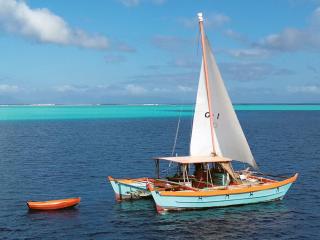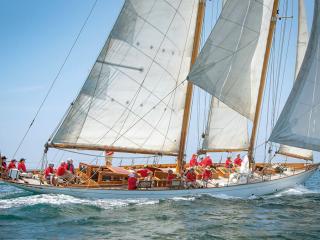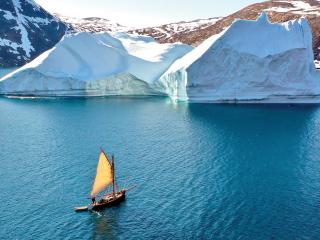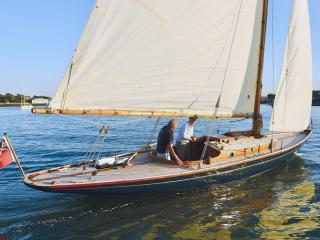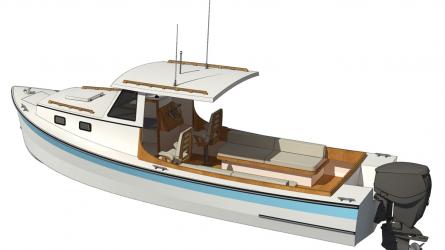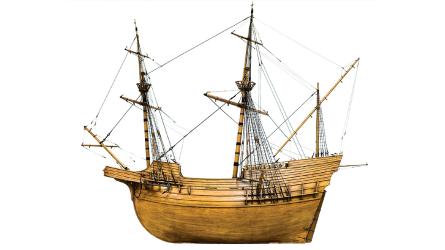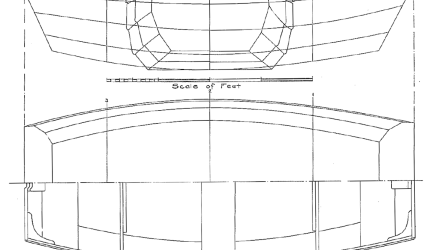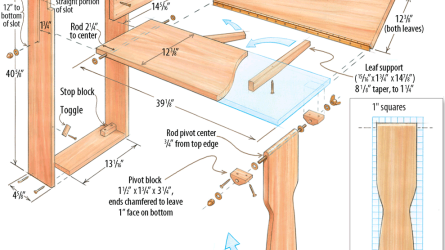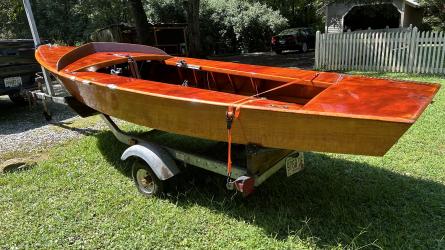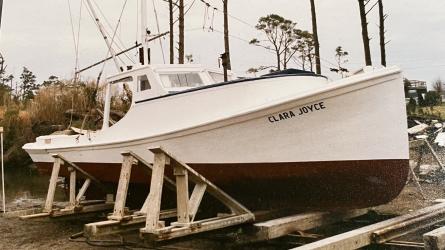July / August 2024
Evolutionary Revolutionaries
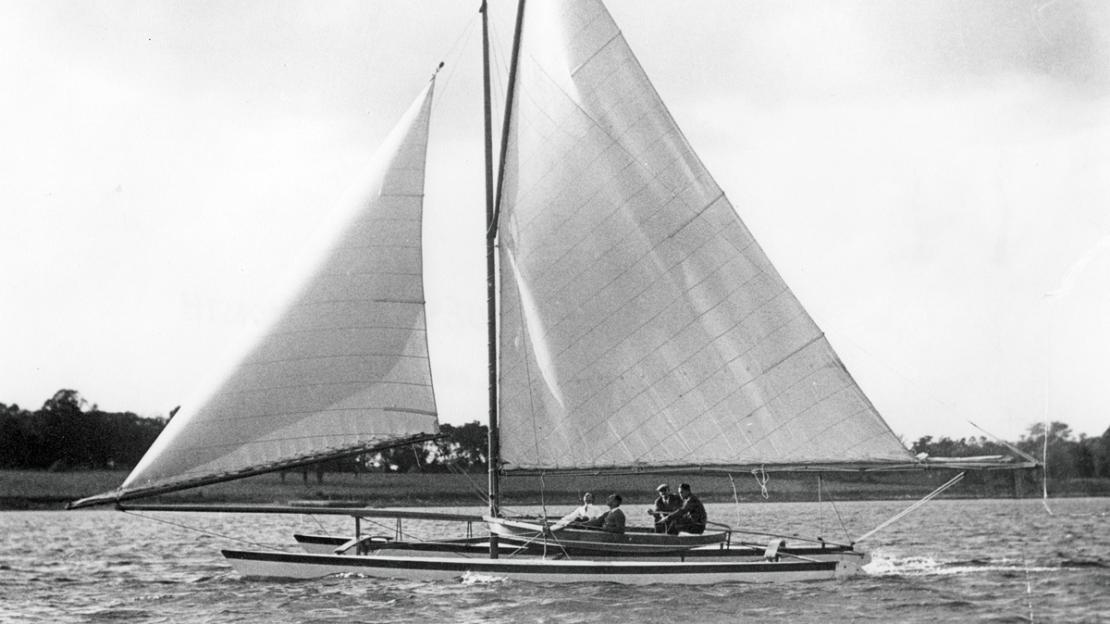
HERRESHOFF MARINE MUSEUM
The era of the modern multihull has paralleled innovations in the use of wood. Nathanael Herreshoff designed a series of catamarans, starting with AMARYLLIS in 1876. Her lightweight hulls moved somewhat independently, foreshadowing a design innovation that would come 100 years later.
Wood forms the skeleton of many modern multihulls—creatures more bird than fish. Largely unknown in Europe and the Americas until after World War II, often misunderstood, and sometimes maligned into this millennium, multihulls have evolved hand-in-hand with advances in wood-composite construction. They are rooted in ancient times, but increasingly popular for racing, cruising, and commercial use.
While multihull enthusiasts have never had any reservations about using whatever material seemed best suited to a project, much of the revolutionary multihull design of recent decades has been reliant on advances in how wood is used in boatbuilding. Conversely, multihull innovators have often pioneered new ways to use wood.
All evidence suggests that multihulls—catamarans (two symmetrical hulls), double-outrigger canoes (a single main hull or vaka balanced by two smaller ones called amas), and proas (two different-sized hulls)—were used to explore and settle the entire Pacific Basin beginning 5,000 years ago, reaching from the western Pacific to as far east as Easter Island 1,600 years ago. This makes them one of, if not the, quintessential voyaging craft.
The word catamaran stems from ancient Tamil roots—katta (to tie) and maram (log). These ancient Pacific craft were built of solid logs, dug-out logs, or planks, and joined using lashed cross-connecting structures (akas). They were ubiquitous across the Pacific by the time European explorers arrived.
From the earliest multihulls, it was obvious that tying a couple of skinny hulls together yielded enormous lateral space, shallow draft, and stiffness under sail. Thin hulls moving through the water also produce exponentially smaller waves of the type that limit the speed of displacement monohulls. Europeans noted that the performance capabilities of these boats were superior to their ships, but the indigenous craft of the Pacific remained little known, appreciated, or developed in Europe, the Mediterranean, or the Americas for centuries.
To read the rest of this article:
Click the button below to log into your Digital Issue Access account.
No digital access? Subscribe or upgrade to a WoodenBoat Digital Subscription and finish reading this article as well as every article we have published for the past 50-years.
ACCESS TO EXPERIENCE
Subscribe Today
1 YEAR SUBSCRIPTION (6 ISSUES)
PLUS ACCESS TO MORE THAN 300 DIGITAL BACK ISSUES
DIGITAL $29.00
PRINT+DIGITAL $42.95
Subscribe
To read articles from previous issues, you can purchase the issue at The WoodenBoat Store link below.
 Purchase this issue from
Purchase this issue from
